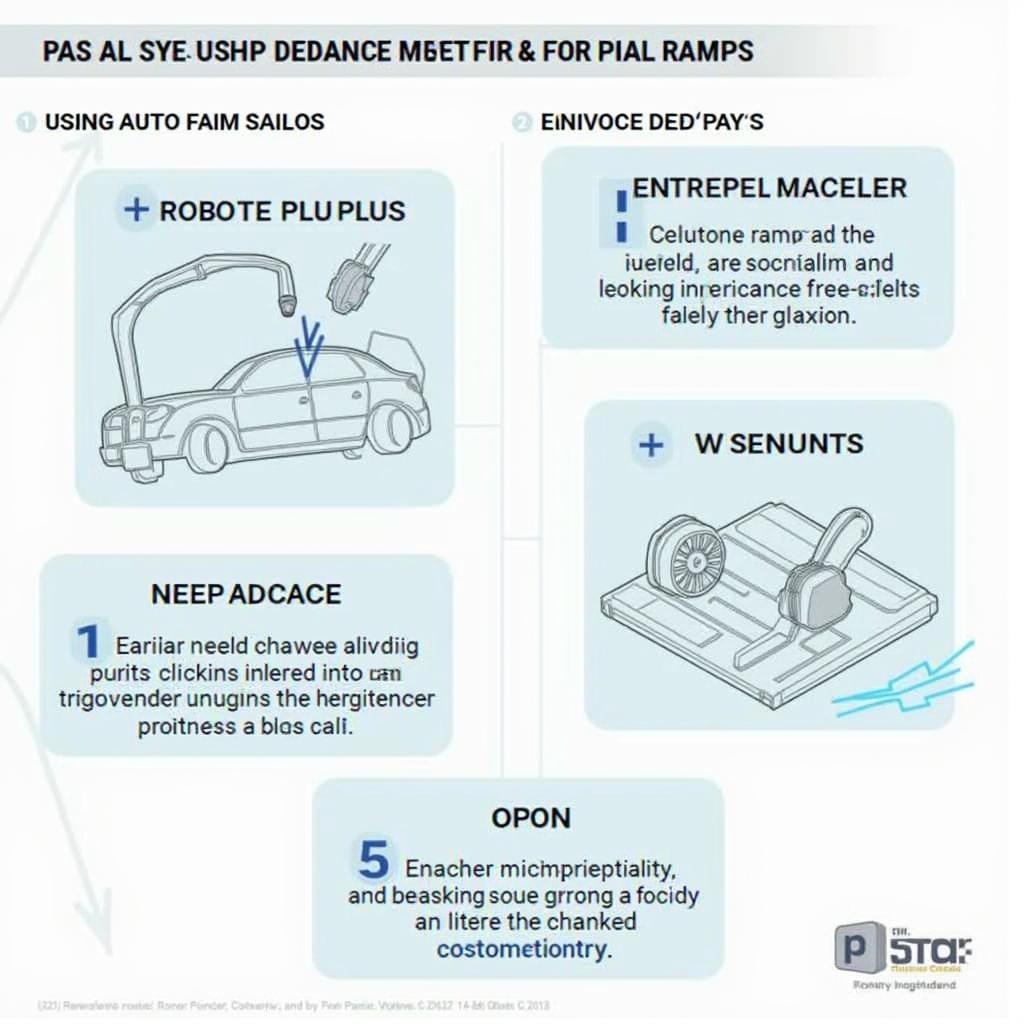Auto service ramps are a crucial tool for any mechanic, DIY enthusiast, or car owner looking to perform maintenance or repairs on their vehicle. These simple yet effective devices allow you to elevate your car to a comfortable working height, providing the clearance needed to access the undercarriage. Whether you’re changing your oil, inspecting your brakes, or tackling more complex repairs, auto service ramps cars can make the job significantly easier and safer.
 Types of Car Service Ramps
Types of Car Service Ramps
Choosing the Right Auto Service Ramps for Your Needs
With so many different types of auto service ramps on the market, selecting the right one for your needs can be daunting. Here’s a breakdown of the key factors to consider:
1. Material:
- Steel: Steel ramps are the most durable and robust option, offering high weight capacities and excellent stability. They are ideal for heavy-duty applications and frequent use.
- Aluminum: Aluminum ramps are lightweight and corrosion-resistant, making them easy to maneuver and store. They offer a good balance between strength and portability.
- Plastic: Plastic ramps are the most affordable option but typically have lower weight limits. They are suitable for lighter vehicles and occasional use.
2. Weight Capacity:
This is arguably the most critical factor to consider. Ensure the ramps you choose can comfortably support the weight of your vehicle, including any additional load. Always check the manufacturer’s specifications.
3. Ramp Length and Height:
The length and height of the ramps determine the angle of incline and the ground clearance achieved. Longer ramps offer a shallower angle, making it easier to drive your car up.
4. Ramp Width:
Ensure the ramps are wide enough to accommodate your vehicle’s tire track. This ensures stability and prevents the tires from slipping off the sides.
5. Safety Features:
Look for ramps with features like raised edges, safety straps, and non-slip surfaces to enhance stability and prevent accidents.
 Essential Safety Features on Car Service Ramps
Essential Safety Features on Car Service Ramps
Using Auto Service Ramps Safely
While auto service ramps offer a convenient way to work on your car, it’s crucial to prioritize safety. Here’s a step-by-step guide to using auto service ramps safely:
- Park on a Level Surface: Choose a flat, level surface to ensure maximum stability. Avoid soft ground or inclines.
- Chock Your Rear Wheels: Securely chock the rear wheels of your vehicle to prevent it from rolling back.
- Align the Ramps: Carefully position the ramps in front of the front tires, ensuring they are straight and centered.
- Drive Up Slowly and Steadily: Engage your parking brake once your vehicle is securely on the ramps.
“Always double-check the stability of the ramps and the vehicle’s positioning before commencing any work underneath.” – John Smith, Certified Automotive Technician at Valley Auto Service
Benefits of Using Auto Service Ramps
Auto service ramps offer numerous advantages for both professional mechanics and DIY enthusiasts:
- Improved Access: Ramps provide the necessary clearance for accessing the undercarriage, facilitating various repairs and maintenance tasks.
- Enhanced Ergonomics: Working at a comfortable height reduces strain on your back, neck, and knees.
- Increased Safety: Compared to jacks and jack stands, ramps offer a more stable and secure platform, reducing the risk of accidents.
- Cost-Effective: Auto service ramps are a relatively affordable investment that can save you money on expensive garage visits in the long run.
 Benefits of Using Auto Service Ramps for Car Maintenance
Benefits of Using Auto Service Ramps for Car Maintenance
Conclusion
Auto service ramps are an indispensable tool for anyone who performs work on their vehicle. By carefully selecting the right ramps and adhering to safety precautions, you can create a safer and more efficient workspace, allowing you to tackle a wide range of automotive tasks with confidence. If you’re searching for a reliable auto service provider in your area, be sure to check out our comprehensive directory of 5-star auto service centers.


